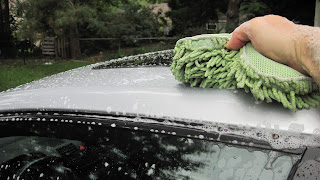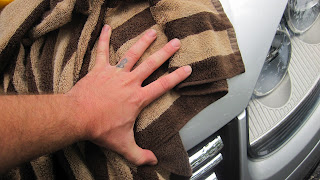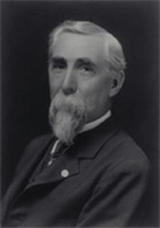Every car ever built consumes oil. You heard me right. Your brand new, Toyota? Yep. That shiny Jaguar? Absolutely. Your fancy rotary-engined Mazda. Oh, lord yes. And don't even ask about German cars!
Oil serves a very important function in your engine. It keeps all of those metal pieces from chewing each other to tiny little metal shavings. So, it's pretty important that there's enough in there. I would be willing to bet that if I pulled the dipstick of 10 random cars between oil change intervals, 7-8 of them would be noticeably low and need topping-off.
But how often is this done? When was the last time you checked your oil? Have you ever checked it? Do you even know how? It used to be, service station attendants would check your oil every time you filled up with gas. As more gas-stations became self-service and fewer attendants were conducting this valuable maintenance routine, too few people realized the importance. And unfortunately, as fewer and fewer people checked, cars continued their slow burn of liquid gold (yes, oil is gold and not black. If it is black, it's time to change it!).
While some newer cars consume decidedly less oil than others, all cars consume some amount of oil. How much depends on many factors: the compression ratio (high is more likely to consume more oil), the number of cylinders, the tolerances of the moving parts within the engine, operation conditions and speed, turbochargers (oil used for cooling evaporates and is not reclaimed 100%), fuel contamination due to faulty crankcase ventilation, etc...the list just goes on and on and on.
But, you can help protect your car with one easy routine that only takes minutes and almost no mechanical ability whatsoever: Check your oil level via the dipstick!
 |
| 3 dipsticks, top to bottom: 1960s-70s British car; 1990s-era American domestic; and 2000s-era German. |
To check your oil, you will need the following:
- a rag or paper towel
That's it.
To start, grab the ring on the dipstick and pull:
If the car has been running, oil will have splashed up the dipstick. For an accurate reading, wipe the length of the dipstick off with a rag or paper towel, reinsert into the tube, and pull out again. Without wiping, hold the dipstick horizontally to read:
In this case, the oil reads just below the "Max" indicator, a properly full oil pan. If the reading is above MAX, you should not drive the car excessively until it is properly drained to the correct level, as this indicates too much oil and will foul the valves, causing potential damage. The MIN line, unreadable on the left in this photo, is the danger zone for lack of oil. You should keep the oil between the indicated levels, and I recommend as close to full as you can without over filling.
It looks like this on other dipsticks:
 |
| Sorry for the blurry iPhone picture- low is to the left, full on the right. The dots indicate level, the rightmost of which represents full. As you can see, this car is very slightly over filled. |
 |
| This old British dipstick is very easy to read. In this case, the level is too low. Good thing I caught this when I did! |
If your car reads low, you simply add oil by removing the oil cap from your engine ("lefty loosey"), and pouring oil in slowly. Give a slight pour for about 2-3 seconds, check again, add if needed, repeat.
 |
| Loosening the oil cap |
 |
| Slowly pour oil here, check, and repeat as necessary. And be careful not to make a big mess. |
I recommend checking your oil every few hundred miles. The easiest way to remember to do this is checking every time you fill your tank with gas. Also, following this schedule allows you to accomplish this task, start-to-finish, before the pump shuts off, time you would normally spend staring at the pump's numbers going up, up, up. Just keep a quart of proper oil (check your owner's manual for oil specification) and a rag in the trunk, wrapped together in plastic to prevent leaks, and keep your car running happily for a lot longer than those who never check!






















